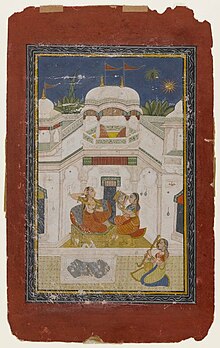| Song |
Movie |
Composer |
Singer |
|---|
| "Chandrodhayam Idhile" |
Kannagi |
S.V. Venkatraman |
P.U. Chinnappa |
| "Madi Meethu" |
Annai Illam |
K V Mahadevan |
T. M. Soundararajan, P. Susheela |
| "Manam Padaithen" |
Kandhan Karunai |
P. Susheela |
| "Aththaan En Aththaan" |
Paava Mannippu |
Viswanathan–Ramamoorthy |
| "Kaadhellenum Vadivam Kanden" |
Bhagyalakshmi |
| "Kaana Vandha Kaatchiyenna" |
| "Enna Enna Vaarththaigalo" |
Vennira Aadai |
| "Ore Raagam Ore Thaalam" |
Manapanthal |
| "Kaatru Vandhal" |
Kathiruntha Kangal |
P.B. Sreenivas, P. Susheela |
| "Kanpadume Pirar Kanpadume" |
P. B. Sreenivas |
| "Paadadha Paatellam" |
Veerathirumagan |
| "Maadi Mele Maadikati" |
Kadhalikka Neramillai |
| "Enna Paarvai" |
K.J. Yesudas, P. Susheela |
| "Kaadhalika Neramillai" |
Sirkazhi Govindarajan |
| "Roja Malare Raajakumari" |
Veerathirumagan |
P. B. Sreenivas, P. Susheela |
| "Poga Poga Theriyum" |
Server Sundaram |
| "Andru Vandhadhum" |
Periya Idathu Penn |
T.M. Soundararajan, P. Susheela |
| "Naan Maanthoppil" |
Enga Veettu Pillai |
| "Aandavan Padachan" |
Nichaya Thaamboolam |
T.M. Soundararajan |
| "Adho Andha Paravai Pola" |
Aayirathil Oruvan |
| "Naan Kavignanum Ilai" |
Padithal Mattum Podhuma |
| "Moondrezhuthil En Moochu" |
Dheiva Thaai |
| "Kadhal Embadhu" |
Paadha Kaanikkai |
P.B. Sreenivas, P. Susheela, L.R. Eswari, J.P. Chandrababu |
| "Epo Vechikalam" |
Bandha Pasam |
J.P. Chandrababu |
| "Enna Paravai Sirakadithu" |
Karthigai Deepam |
R. Sudarsanam |
T.M. Soundararajan(ver 1), P. Susheela(ver 2) |
| "Pudhu Naadagathil" |
Ooty Varai Uravu |
M. S. Viswanathan |
T. M. Soundararajan |
| "Kettavarellam Paadalam" |
Thangai |
| "Anubhavi Raja Anubhavi" |
Anubavi Raja Anubavi |
P. Susheela, L.R. Eswari |
| "Maanendru Pennukoru" |
P. Susheela |
| "Naan Paadum Paatile" |
Bhavani |
| "Love Birds" |
Anbe Vaa |
| "Maharaja Oru Maharaani" |
Iru Malargal |
T.M. Soundararajan, Shoba Chandrasekhar |
"Enni Irundhadhu"
(Ragam Neelambari Touches) |
Andha 7 Naatkal |
Malaysia Vasudevan, Vani Jairam |
| "Vidiya Vidiya Solli" |
Pokkiri Raja |
S.P. Balasubrahmanyam, P. Susheela |
| "Dil Dil Dil Manadhil" |
Mella Thirandhathu Kadhavu |
| "Aadungal Paadungal" |
Guru |
Ilaiyaraaja |
S.P. Balasubrahmanyam |
| "Pudhucheri Katcheri" |
Singaravelan |
| "Thene Thenpaandi" |
Udaya Geetham |
| "Nilaave Vaa" |
Mouna Ragam |
| "Yerikkarai Poongaatre Nee Pora Vazhi" |
Thooral Ninnu Pochchu |
K.J. Yesudas |
| "Thaalattudhe Vaanam" |
Kadal Meengal |
P. Jayachandran, S. Janaki |
| "Pudhu Maapilaiku" |
Apoorva Sagodharargal |
S.P. Balasubrahmanyam, S.P. Sailaja |
| "Aalapol Vellapol" |
Ejamaan |
S. P. Balasubrahmanyam, K. S. Chithra |
| "Paarthathenna Paarvai" |
Naangal |
| "Indha Minminiku" |
Sigappu Rojakkal |
Malaysia Vasudevan, S. Janaki |
| "Malaiyaala Karaiyoram" |
Rajadhi Raja |
Mano |
| "Germaniyin Senthen Malare" |
Ullasa Paravaigal |
S.P. Balasubrahmanyam, S. Janaki |
| "Anjali Anjali Anjali" |
Anjali |
Sathya, Karthik Raja, Yuvan Shankar Raja,
Bhavatharini, Venkat Prabhu, Premji Amaran,
Parthi Bhaskar,Hari Bhaskar,Vaishnavi |
| "Thulli Ezhunthathu" |
Geethanjali |
Ilaiyaraaja |
| "Kanmani Anbodu Kadhalan" |
Gunaa |
Kamal Haasan, S. Janaki |
| "Kuzhaloodhum Kannanuku" |
Mella Thirandhathu Kadhavu |
K.S. Chithra |
| "Dillu Baru Jaane" |
Kalaignan |
Mano, K. S. Chithra |
| "Nila Kaayum Neeram" |
Chembaruthi |
Mano, S. Janaki |
| "Paattu Poove" |
| "April Mayilae" |
Idhayam |
Ilaiyaraaja, Deepan Chakravarthy, S.N.Surendar |
| "Naan Erikarai" |
Chinna Thayee |
K.J. Yesudas, Swarnalatha |
| "Maalai En Vethanai" |
Sethu |
Unni Krishnan, Arunmozhi, S.N.Surendar |
| "Thendrale" |
Kadhal Desam |
A. R. Rahman |
Mano, Unni Krishnan |
| "O Vennila" |
Unni Krishnan |
| "Kandukondain Kandukondain" (Ragam Nalinakanthi Touches also) |
Kandukondain Kandukondain |
Hariharan, Mahalakshmi Iyer |
| "Maanooththu Manthaiyile" |
Kizhakku Cheemayile |
S.P. Balasubrahmanyam, Sasirekha |
| "Ini Achcham Achcham Illai" |
Indira |
Sujatha Mohan, Anuradha Sriram, G.V. Prakash, Shweta Mohan, Esther |
| "Thoda Thoda Malarndhadhenna" |
S.P. Balasubrahmanyam, K.S. Chithra |
| "Kangalil Enne" |
Uzhavan |
| "Pennalla Pennalla" |
S.P. Balasubrahmanyam |
| "Moongilile Paatisaikum Kaatralaiyai" |
Raagam Thedum Pallavi |
T. Rajendar |
| "Mazhaiyum Neeye" |
Azhagan |
Maragadha Mani |
| "Sa Sa Sa Sani Thapa Niveathaa" |
Nee Pathi Naan Pathi |
| "Naadodi Paattu Paada" |
Harichandra |
Agosh |
| "Enna Kathai Solla" |
Annanagar Mudhal Theru |
Chandrabose |
S.P. Balasubrahmanyam, K.S. Chithra |
| "Shenbaga Poovai" |
Paasamalargal |
V. S. Narasimhan |
S.P. Balasubrahmanyam, Sujatha Mohan |
| "Nalam Nalamariya Aval" |
Kadhal Kottai |
Deva |
S. P. Balasubrahmanyam, Anuradha Sriram |
| "Pulveli Pulveli" |
Aasai |
K.S. Chithra, Unni Krishnan(Humming only) |
| "Yeno Yeno" |
Appu |
Hariharan, Sujatha, Harini |
| "Sollathae" |
Sollamale |
Bobby |
Hariharan, K. S. Chithra |
| "Aval Ulaghazhagi" |
Lesa Lesa |
Harris Jayaraj |
Karthik |
| "Rakita Rakita Rakita" |
Jagame Thanthiram |
Santhosh Narayanan |
Dhanush, Santhosh Narayanan |
| "Kadhale Kadhale" |
Konjam Koffee Konjam Kaadhal |
Phani Kalyan |
Prasanna, Neha Nair |
